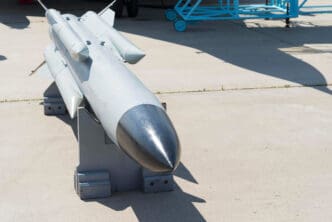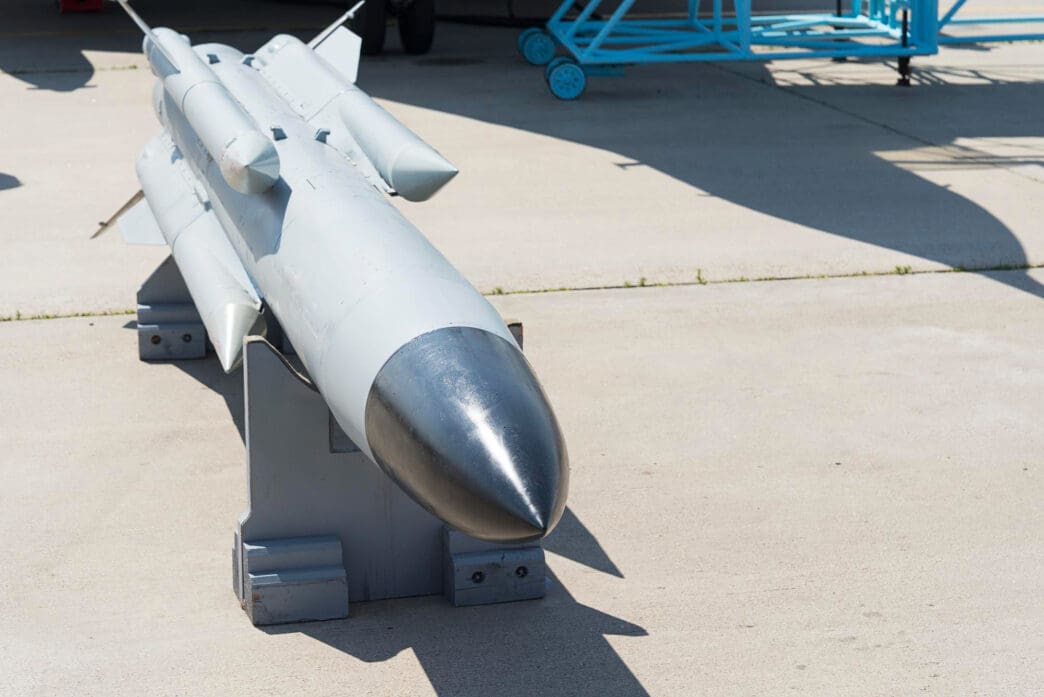Executive Summary
- Advanced missile technologies, including hypersonic, tactical ballistic, and nuclear-capable systems, are intensifying global security concerns and increasing the risk of major international conflict.
- These modern weapons possess unprecedented speed, accuracy, and evasive capabilities, significantly reducing reaction times for potential targets and making existing defense systems largely ineffective.
- The global arms race, fueled by these advanced missiles, fosters suspicion and heightens the possibility of miscalculation, pushing the world towards a critical juncture reminiscent of the Cold War era.
The Story So Far
- The current global security environment is significantly heightened by the widespread development and deployment of advanced missile technologies, including hypersonic, tactical ballistic, and nuclear-capable systems, by multiple nations. These modern weapons, exemplified by Russia’s RS-28 Sarmat, China’s DF-41, and America’s Dark Eagle, possess unprecedented speed, accuracy, and evasive capabilities, which drastically reduce reaction times and complicate defensive responses, as they can carry both conventional and nuclear warheads and are capable of overwhelming existing defense systems, thereby fueling a dangerous arms race and increasing the risk of miscalculation and rapid escalation in tense geopolitical environments.
Why This Matters
- The proliferation of advanced missile technologies, including hypersonic and nuclear-capable systems, is intensifying a global arms race, significantly heightening the risk of major international conflict by reducing reaction times and complicating defensive responses, while rendering current missile defense systems largely ineffective and increasing the potential for catastrophic miscalculation in volatile geopolitical environments.
Who Thinks What?
- Defense experts and military analysts believe advanced missile technologies are intensifying global security concerns, increasing the risk of major international conflict through reduced reaction times, heightened miscalculation potential, and the ineffectiveness of current defense systems.
- Nations developing and deploying these advanced missiles, such as Russia, China, and the U.S., assert that these weapons are for deterrence.
- China views the U.S. testing of missiles like the Dark Eagle as a direct threat, particularly concerning Taiwan, while Russia sees the provision of long-range missiles to Ukraine by the U.S. as an escalation that could draw the U.S. deeper into conflict.
Advanced missile technologies, including hypersonic, tactical ballistic, and nuclear-capable delivery systems, are intensifying global security concerns and increasing the risk of a major international conflict, according to defense experts. These modern weapons, exemplified by Russia’s RS-28 Sarmat, China’s DF-41, and America’s Dark Eagle, possess unprecedented speed, accuracy, and evasive capabilities, significantly reducing reaction times for potential targets and raising the specter of rapid, expansive retaliation. The development and deployment of these systems by multiple nations are contributing to a global arms race, fostering suspicion, and heightening the possibility of miscalculation in already tense geopolitical environments.
The Evolving Threat of Modern Missiles
The latest generation of missiles represents a significant leap in military technology, surpassing previous iterations in speed, precision, and stealth. Unlike their predecessors, many of these new missiles can carry both nuclear and conventional warheads, creating ambiguity that complicates defensive responses and increases the risk of immediate, potentially catastrophic, escalation. This uncertainty is compounded by the missiles’ ability to overwhelm existing defense systems through high speeds, unpredictable flight paths, and the deployment of multiple warheads.
Military analysts warn that such capabilities could lead nations to believe they can execute a first strike and withstand a counterattack, a calculation that could have dire consequences. The global arms race, involving countries like Russia, China, North Korea, and Iran, is accelerating the development and deployment of these advanced systems. While nations often claim these weapons are for deterrence, experts argue they instead fuel suspicion and increase the likelihood of sudden escalation.
Key Flashpoints and Escalation Risks
Several geopolitical flashpoints are identified as particularly vulnerable to missile-related escalation. In the Indo-Pacific, the U.S. testing of missiles like the Dark Eagle is viewed by China as a direct threat, particularly concerning Taiwan, and could trigger a rapid response. Similarly, the provision of long-range missiles to Ukraine by the U.S. is seen by Russia as an escalation, with warnings that it could draw the U.S. deeper into the conflict and increase the risk of a broader war involving NATO.
In such volatile regions, even a single missile test or an accidental launch could be misinterpreted as an act of aggression, leading to an irreversible chain of events. The speed and power of these missiles mean that once they are fired, de-escalation may become virtually impossible.
Dangerous Missiles of Concern
Among the most concerning missile systems are Russia’s RS-28 Sarmat, China’s DF-41, and America’s Dark Eagle hypersonic missile, each possessing unique features that amplify their danger:
Russia’s RS-28 Sarmat
The RS-28 Sarmat, known as “Satan II,” is Russia’s largest missile, weighing over 200 tons and launched from hidden underground silos. It can carry more than 10 nuclear warheads, each capable of targeting different locations. Russia asserts that its speed and ability to alter its flight path make it impervious to current missile defense systems, with a single warhead possessing destructive power far exceeding that of the Hiroshima bomb.
China’s DF-41
China’s DF-41 intercontinental ballistic missile is notable for its speed, exceeding Mach 25, and its capacity to carry up to 10 nuclear warheads. A key feature is its mobility; mounted on large trucks, it can be hidden and launched from various locations across China, complicating efforts to track or neutralize it before launch. U.S. officials have cited this missile as a significant threat to American cities.
America’s Dark Eagle
The Dark Eagle is the U.S.’s most advanced hypersonic missile, capable of traveling over five times the speed of sound and hitting targets over 1,700 miles away in under 30 minutes. Its ability to glide and change direction mid-flight makes it extremely difficult for enemy defenses to intercept. The U.S. Army began deploying the Dark Eagle in 2025, integrating it into major military exercises with allies.
Other Emerging Missile Threats
Beyond these three, several other nations have developed or are developing advanced missile systems that contribute to global instability:
- Russia’s Oreshnik (RS-26 Rubezh): A hypersonic, intermediate-range ballistic missile capable of Mach 10 and multiple warheads, stationed near NATO borders.
- China’s DF-61 ICBM: Unveiled in 2025, this intercontinental missile reportedly has a range of 42,000 km and can reach Mach 55, raising concerns about its potential to target U.S. missile silos.
- North Korea’s Hwasong-19 ICBM: An intercontinental missile tested by North Korea, capable of carrying multiple warheads and increasing tensions in East Asia.
- Iran’s Shahab-3 MRBM: A medium-range missile capable of carrying a nuclear warhead, contributing to instability in the Middle East.
- India’s Agni-P MRBM: A medium-range missile capable of carrying multiple nuclear warheads, adding complexity to South Asia’s security dynamics.
- Israel’s Jericho III ICBM: An intercontinental missile with a range of approximately 11,500 km, enhancing Israel’s nuclear deterrence.
- U.S. Long-Range Missiles to Ukraine: The potential provision of Tomahawk and ATACMS missiles to Ukraine is viewed by Russia as an escalatory step, potentially drawing NATO into direct conflict.
Limitations of Missile Defense Systems
Current missile defense systems are largely ineffective against the latest generation of missiles. Their design relies on intercepting incoming missiles in flight, but the extreme speed, maneuverability, and stealth capabilities of modern systems like Dark Eagle, Sarmat, and DF-41 render this approach increasingly challenging. These missiles can employ countermeasures such as decoys, change headings, or fly at altitudes and speeds that preclude timely interception, meaning that a coordinated, large-scale attack would likely overwhelm existing defenses.
Diplomacy and Communication as Safeguards
Experts emphasize that diplomacy and robust communication channels are the primary safeguards against a global conflict triggered by missile use. Establishing clear agreements, maintaining hotlines between rival nations, and engaging in arms control talks are crucial steps to reduce risks. However, with international relations strained and trust at historically low levels, many fear the world is approaching a critical juncture not seen since the Cold War era.








